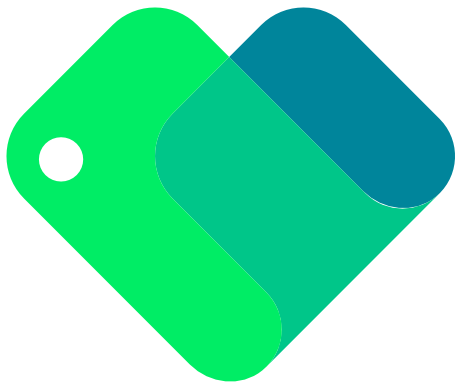Integrating Custom Status Bar Colors in iOS WebView Apps Using WebViewGold’s Dynamic UI API

Embarking on the exciting journey of transforming a website into a fully functioning iOS app is facilitated by innovative tools like WebViewGold. This robust solution offers an effortless way to convert any website into an iOS or Android app. Beyond the conversion, WebViewGold enables developers to implement customized features, such as setting unique status bar colors, further enhancing the user experience. In this blog post, we will explore how to integrate custom status bar colors in your iOS WebView app utilizing WebViewGold’s Dynamic UI API.
Why Custom Status Bar Colors Matter
The status bar is a vital part of any mobile interface, displaying essential system information like time, battery life, and network status. For brand consistency and a polished look, customizing the status bar color to match your app’s theme can make a significant difference. It helps in creating a seamless and immersive user experience.
An Overview of WebViewGold
WebViewGold stands out as a quick and simple solution to convert websites into iOS and Android apps without extensive coding knowledge. With WebViewGold, developers can leverage existing web content, bypassing the need to build apps from scratch. The platform supports various features, including push notifications, file uploads, geolocation, and most pertinent to our discussion, customizable status bars through its Dynamic UI API.
Setting Up Your WebView App with WebViewGold
Before diving into dynamic status bar color customization, ensure that you have set up your WebView app using WebViewGold. Follow these simplified steps:
1. **Purchase and Download WebViewGold**: Obtain the WebViewGold package and download it to your system.
2. **Configure Your Project**: Open the project in Xcode for iOS or Android Studio for Android. Replace the placeholder URL with your website’s URL.
3. **Customize and Build**: Add any necessary configurations and customizations, then build and run your app.
Utilizing the Dynamic UI API for Custom Status Bar Colors
WebViewGold’s Dynamic UI API is a powerful tool that allows developers to customize the interface dynamically based on their requirements. Here’s how you can use it to set custom status bar colors:
1. **Access the Dynamic UI API**: In your WebViewGold project, locate the file `ViewController.swift`.
2. **Implement the Customization Code**:
Add the following code snippet inside the `ViewController.swift` to modify the status bar color dynamically:
“`swift
override func viewDidLoad() {
super.viewDidLoad()
// Additional setup code
setStatusBarColor(color: UIColor.red) // Replace UIColor.red with your desired color
}
func setStatusBarColor(color: UIColor) {
if let statusBar = (UIApplication.shared.value(forKey: statusBarWindow) as? UIWindow)?.value(forKey: statusBar) as? UIView {
statusBar.backgroundColor = color
}
}
“`
This function changes the status bar color based on the `UIColor` parameter passed.
3. **Dynamic Color Based on Web Content**:
To change the status bar color dynamically based on web content, you can use JavaScript to communicate with Swift:
“`javascript
// Call this function from your web content
function changeStatusBarColor(color) {
webkit.messageHandlers.changeStatusBarColor.postMessage(color);
}
“`
Enhance `ViewController.swift` to listen for this message and adjust the color accordingly:
“`swift
class ViewController: UIViewController, WKScriptMessageHandler {
override func viewDidLoad() {
super.viewDidLoad()
// Additional setup code
let userContentController = WKUserContentController()
userContentController.add(self, name: changeStatusBarColor)
}
func userContentController(_ userContentController: WKUserContentController, didReceive message: WKScriptMessage) {
if message.name == changeStatusBarColor, let colorString = message.body as? String {
// Convert color string to UIColor and set status bar color
setStatusBarColor(color: UIColor(hexString: colorString))
}
}
func setStatusBarColor(color: UIColor) {
if let statusBar = (UIApplication.shared.value(forKey: statusBarWindow) as? UIWindow)?.value(forKey: statusBar) as? UIView {
statusBar.backgroundColor = color
}
}
}
extension UIColor {
convenience init(hexString: String) {
var cString:String = hexString.trimmingCharacters(in: .whitespacesAndNewlines).uppercased()
if (cString.hasPrefix(#)) {
cString.remove(at: cString.startIndex)
}
if ((cString.count) != 6) {
self.init(white: 0, alpha: 0)
return
}
var rgbValue:UInt64 = 0
Scanner(string: cString).scanHexInt64(&rgbValue)
self.init(
red: CGFloat((rgbValue & 0xFF0000) >> 16) / 255.0,
green: CGFloat((rgbValue & 0x00FF00) >> 8) / 255.0,
blue: CGFloat(rgbValue & 0x0000FF) / 255.0,
alpha: CGFloat(1.0)
)
}
}
“`
Conclusion
Customizing the status bar color in your iOS WebView apps not only enhances the visual appeal but also ensures a cohesive user experience that aligns with your brand identity. Thanks to WebViewGold’s Dynamic UI API, this customization is straightforward and seamlessly integrates with your existing web content. By leveraging WebViewGold, you can convert websites into iOS apps effortlessly while retaining control over various UI elements, ensuring that your app looks and feels exactly as you envisioned.
